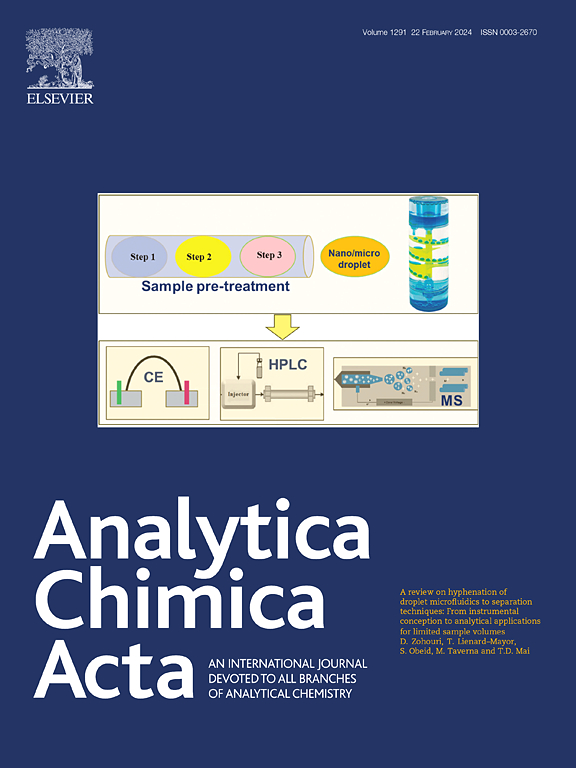磁性纳米粒子上的绿色发光碳点-免疫传感器用于检测作为癌症干细胞生物标记的 Nanog 抗原
IF 5.7
2区 化学
Q1 CHEMISTRY, ANALYTICAL
引用次数: 0
摘要
本文章由计算机程序翻译,如有差异,请以英文原文为准。


Green emitting carbon dots-immunosensor on magnetic nanoparticles for detection of Nanog antigen as a cancer stem cell biomarker
Background
Embryonic Nanog is recognized as a crucial controller of pluripotency. In the progression of cancer and the formation of metastasis, cancer cells with stem cell-like characteristics frequently express Nanog. Precisely identifying the Nanog antigen poses a significant challenge due to its low abundance in biofluids. The precise detection of the Nanog antigen originating from cancer cells has attracted growing interest for its potential uses in diagnostics and prognostics.
Results
In this study, a novel fluorescence strategy utilizing green carbon dots was developed for the highly sensitive and specific detection of Nanog. This approach involved the use of fluoro-immunosensors based on magnetic nanoparticles (MNPs) and antibodies targeting the cancer Stem Cells (CSCs) biomarker, Nanog. In this study, the targeted Nanog was magnetically separated following its reaction with green carbon dots and magnetic nanoparticles, both conjugated with anti-nanog antibodies. The findings show a clear increase in fluorescence with the rising concentration of Nanog antigen in the sample. The linear range for Nanog, measured under optimal experimental conditions, was found to be 5.0 × 10 −11 g/L to 1.0 × 10 −9 g/L. The detection limit (LOD) was calculated to be 1.0 × 10 −11 g/L.
Significance
This study introduces a fluoro-immunosensor employing magnetic nanoparticles (MNPs) and high quantum efficiency green-emitting carbon dots. This represents the first use of these carbon dots in this type of sensor. The biosensor has demonstrated effective detection of Nanog in biological samples. This developed biosensor, which is both convenient and highly sensitive, presents a significant opportunity for quantifying Nanog in biological research and clinical applications.
求助全文
通过发布文献求助,成功后即可免费获取论文全文。
去求助
来源期刊

Analytica Chimica Acta
化学-分析化学
CiteScore
10.40
自引率
6.50%
发文量
1081
审稿时长
38 days
期刊介绍:
Analytica Chimica Acta has an open access mirror journal Analytica Chimica Acta: X, sharing the same aims and scope, editorial team, submission system and rigorous peer review.
Analytica Chimica Acta provides a forum for the rapid publication of original research, and critical, comprehensive reviews dealing with all aspects of fundamental and applied modern analytical chemistry. The journal welcomes the submission of research papers which report studies concerning the development of new and significant analytical methodologies. In determining the suitability of submitted articles for publication, particular scrutiny will be placed on the degree of novelty and impact of the research and the extent to which it adds to the existing body of knowledge in analytical chemistry.
 求助内容:
求助内容: 应助结果提醒方式:
应助结果提醒方式:


